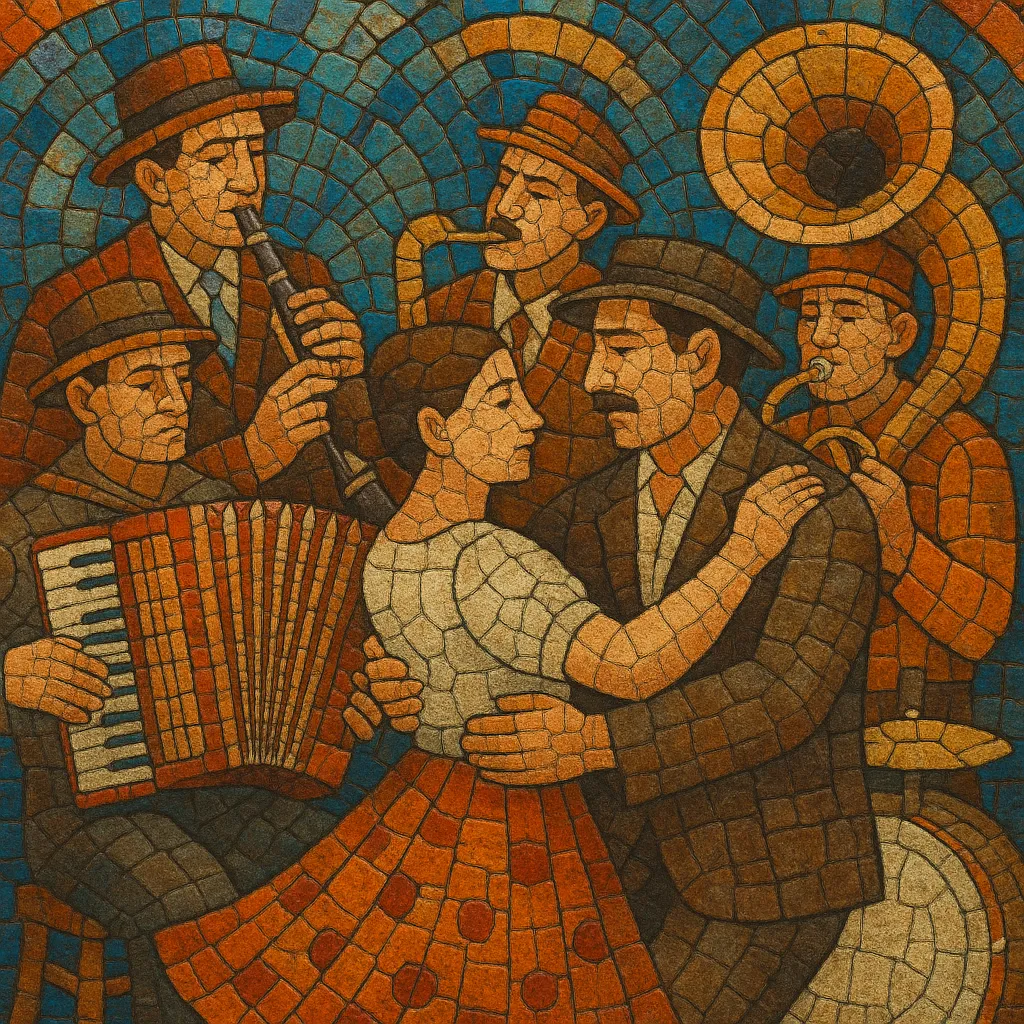Polka is a lively Central European couple dance and musical style in a brisk 2/4 meter, characterized by its buoyant “oom‑pah” bass-chord accompaniment and bright, diatonic melodies.
Originating in Bohemia (today’s Czech Republic) in the early 19th century, it quickly became a pan-European craze before taking root across immigrant communities in the Americas. Ensembles typically feature accordion or button box/concertina, clarinet or saxophone, trumpets/trombone, tuba or string bass, and drum kit, with regional variants highlighting different lead voices and rhythmic feels.
While the classical ballroom tradition codified polka into formal strains (often AABB with a contrasting trio), folk and popular styles favor singable tunes, simple I–IV–V harmonies, and tempos commonly around 115–135 BPM, inviting upbeat social dancing and communal celebration.
Polka emerged in the early 1830s in Bohemia as a vivacious peasant dance that distilled local folk idioms into a simple, energetic couple dance in 2/4. Its hallmark “oom‑pah” feel—bass on the downbeat and chords on the offbeat—made it both immediately catchy and easy to learn. By the mid-1830s, it had moved from rural festivities to Prague dance halls.
From Prague the polka reached Vienna, Paris, and London in the 1840s, sparking a true dance craze. Ballroom orchestras and salon arrangers formalized its structure into clear strains and trios, and composers in the Austro‑Hungarian and broader European spheres (including the Strauss family and Czech composers like Smetana) produced concert polkas alongside waltzes. The style acquired standardized steps and a recognizable rhythmic profile that could be adapted for various ensembles.
In the late 19th and early 20th centuries, Central and Eastern European immigrants brought polka to the United States, Canada, and Latin America. It flourished in ethnic communities, spawning distinct regional sounds: the Upper Midwest’s Czech/Bohemian bands, Polish‑American “Chicago honky” and “push” styles, and German‑American variants. In Mexico and the U.S. Southwest, contact with German/Czech music helped shape norteño, conjunto/tejano, banda, and later duranguense, where the polka’s 2/4 drive and accordion/tuba textures became foundational.
The 20th century saw polka stars rise on radio and records, sustaining dance halls and festivals. Television bandleaders popularized the sound for mainstream audiences, while later revivals embraced both tradition and playful hybrids, from conservatory‑polished concert polkas to genre‑bending acts that fused polka with rock or world styles. Today, polka remains a vibrant social dance tradition and a living musical language within diaspora and regional scenes worldwide.


